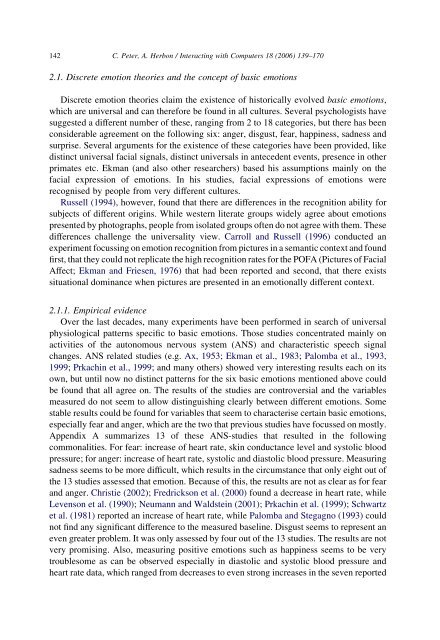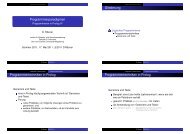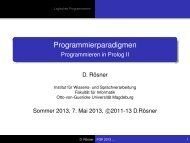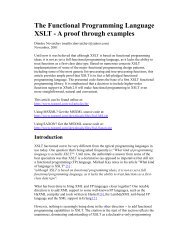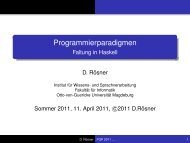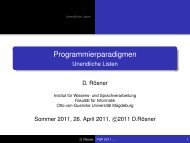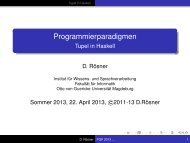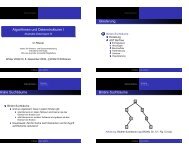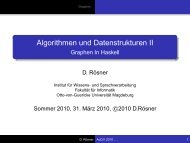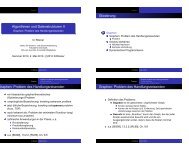Emotion representation and physiology assignments in digital systems
Emotion representation and physiology assignments in digital systems
Emotion representation and physiology assignments in digital systems
You also want an ePaper? Increase the reach of your titles
YUMPU automatically turns print PDFs into web optimized ePapers that Google loves.
142<br />
C. Peter, A. Herbon / Interact<strong>in</strong>g with Computers 18 (2006) 139–170<br />
2.1. Discrete emotion theories <strong>and</strong> the concept of basic emotions<br />
Discrete emotion theories claim the existence of historically evolved basic emotions,<br />
which are universal <strong>and</strong> can therefore be found <strong>in</strong> all cultures. Several psychologists have<br />
suggested a different number of these, rang<strong>in</strong>g from 2 to 18 categories, but there has been<br />
considerable agreement on the follow<strong>in</strong>g six: anger, disgust, fear, happ<strong>in</strong>ess, sadness <strong>and</strong><br />
surprise. Several arguments for the existence of these categories have been provided, like<br />
dist<strong>in</strong>ct universal facial signals, dist<strong>in</strong>ct universals <strong>in</strong> antecedent events, presence <strong>in</strong> other<br />
primates etc. Ekman (<strong>and</strong> also other researchers) based his assumptions ma<strong>in</strong>ly on the<br />
facial expression of emotions. In his studies, facial expressions of emotions were<br />
recognised by people from very different cultures.<br />
Russell (1994), however, found that there are differences <strong>in</strong> the recognition ability for<br />
subjects of different orig<strong>in</strong>s. While western literate groups widely agree about emotions<br />
presented by photographs, people from isolated groups often do not agree with them. These<br />
differences challenge the universality view. Carroll <strong>and</strong> Russell (1996) conducted an<br />
experiment focuss<strong>in</strong>g on emotion recognition from pictures <strong>in</strong> a semantic context <strong>and</strong> found<br />
first, that they could not replicate the high recognition rates for the POFA (Pictures of Facial<br />
Affect; Ekman <strong>and</strong> Friesen, 1976) that had been reported <strong>and</strong> second, that there exists<br />
situational dom<strong>in</strong>ance when pictures are presented <strong>in</strong> an emotionally different context.<br />
2.1.1. Empirical evidence<br />
Over the last decades, many experiments have been performed <strong>in</strong> search of universal<br />
physiological patterns specific to basic emotions. Those studies concentrated ma<strong>in</strong>ly on<br />
activities of the autonomous nervous system (ANS) <strong>and</strong> characteristic speech signal<br />
changes. ANS related studies (e.g. Ax, 1953; Ekman et al., 1983; Palomba et al., 1993,<br />
1999; Prkach<strong>in</strong> et al., 1999; <strong>and</strong> many others) showed very <strong>in</strong>terest<strong>in</strong>g results each on its<br />
own, but until now no dist<strong>in</strong>ct patterns for the six basic emotions mentioned above could<br />
be found that all agree on. The results of the studies are controversial <strong>and</strong> the variables<br />
measured do not seem to allow dist<strong>in</strong>guish<strong>in</strong>g clearly between different emotions. Some<br />
stable results could be found for variables that seem to characterise certa<strong>in</strong> basic emotions,<br />
especially fear <strong>and</strong> anger, which are the two that previous studies have focussed on mostly.<br />
Appendix A summarizes 13 of these ANS-studies that resulted <strong>in</strong> the follow<strong>in</strong>g<br />
commonalities. For fear: <strong>in</strong>crease of heart rate, sk<strong>in</strong> conductance level <strong>and</strong> systolic blood<br />
pressure; for anger: <strong>in</strong>crease of heart rate, systolic <strong>and</strong> diastolic blood pressure. Measur<strong>in</strong>g<br />
sadness seems to be more difficult, which results <strong>in</strong> the circumstance that only eight out of<br />
the 13 studies assessed that emotion. Because of this, the results are not as clear as for fear<br />
<strong>and</strong> anger. Christie (2002); Fredrickson et al. (2000) found a decrease <strong>in</strong> heart rate, while<br />
Levenson et al. (1990); Neumann <strong>and</strong> Waldste<strong>in</strong> (2001); Prkach<strong>in</strong> et al. (1999); Schwartz<br />
et al. (1981) reported an <strong>in</strong>crease of heart rate, while Palomba <strong>and</strong> Stegagno (1993) could<br />
not f<strong>in</strong>d any significant difference to the measured basel<strong>in</strong>e. Disgust seems to represent an<br />
even greater problem. It was only assessed by four out of the 13 studies. The results are not<br />
very promis<strong>in</strong>g. Also, measur<strong>in</strong>g positive emotions such as happ<strong>in</strong>ess seems to be very<br />
troublesome as can be observed especially <strong>in</strong> diastolic <strong>and</strong> systolic blood pressure <strong>and</strong><br />
heart rate data, which ranged from decreases to even strong <strong>in</strong>creases <strong>in</strong> the seven reported


